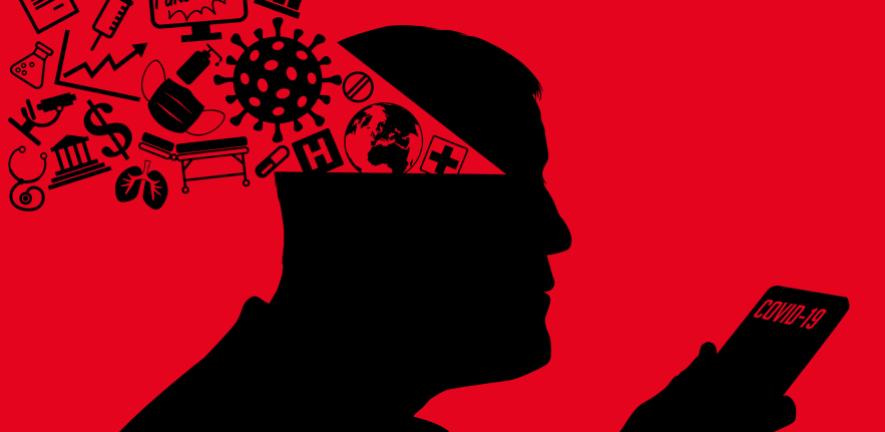
Submitted by cmb231 on 27th October 2022
This three-day virtual study group explored the challenges related to scientific misinformation/miscommunication in the media and the impact of the COVID-19 pandemic on scientists. A report has been published below, which highlights the discussions that took place at the Study Group and the initial findings.
Background
The COVID-19 Pandemic has impacted many lives of people across the world. This has meant that now more than ever, the public is keen to (and has a need to) know the latest and most accurate science. In addition, scientists are under immense pressure to not only produce quality research under tight timescales, in order to help the UK government form policies and make decisions, but also to communicate their findings to audiences from both scientific and non-scientific backgrounds, both on television, radio and on social media platforms.
The influence of news outlets and social media on society has implications on the public perception of science. As discussed in the Royal Society’s report on ‘The online information environment’, the algorithms used on social media platforms mean that people see more of what they like, and this may help form a particular way of thinking. The negative effects of this influence are exacerbated when misinformation is spread, causing confusion and misunderstandings. Furthermore, scientists are faced with directly dealing with praise and scrutiny of their research through their social media platforms.
This three-day virtual study group was developed and run by V-KEMS on behalf of the RAMP Continuity Network, the follow on to the Royal Society’s Rapid Assistance in Modelling the Pandemic (RAMP) initiative. The Newton Gateway to Mathematics worked in collaboration with Professor Chris Budd (a V-KEMS partner) to organise this event.
Aims and Objectives
This event aimed to bring mathematical scientists and other disciplines together to solve end user defined challenges with the aim of addressing the issues associated with the public perception of science. The presenters and challenge areas were:
Keynote
Dr Kit Yates (University of Bath) – giving the perspective from a scientist’s point of view, who is also active in the media and on social media. Kit is a Mathematical Biologist, author, and science communicator. Kit is also involved in developing a Mathematical Communication Centre as part of his IMI Fellowship.
Kit coved challenges of communicating maths specifically, as well as general science communication and his experiences as part of Independent SAGE and in different media outlets.
Challenge 1 – Trustworthy Communication – Winton Centre
Sir John Aston (University of Cambridge) – presenting a challenge on Trustworthy Communication on behalf of the Winton Centre. John is the Harding Professor of Statistics in Public Life and former Chief Scientific Adviser and Director General for Science, Technology, Analysis, Research and Strategy at the Home Office.
This challenge asked “How trustworthy was the communication of evidence during the pandemic? Did trustworthiness have any impact?” and will was facilitated by researchers from the Winton Centre Sarah Dryhurst, John Kerr, and Claudia Schneider across the three days.
Challenge 2 – Communicating Mathematics – The Times
Tom Whipple (The Times) – presenting a challenge on Communicating Mathematics on behalf of The Times. Tom has been covering science for The Times since 2011, has a degree in mathematics and is an author.
This challenge asked “How can we train mathematicians to communicate & how can we work with journalists and policy makers effectively?”
With input from Professor An Nguyen (Bournemouth University) regarding building a working relationship between statisticians and journalists and Rachel Thomas (Plus Magazine) regarding their experience as science communicators within JUNIPER and beyond.
Challenge 3 – Misinformation – Office for Statistics Regulation
Ed Humpherson (Office for Statistics Regulation) – presenting a challenge on Misinformation on behalf of the Office for Statistics Regulation (OSR), which provides independent regulation of all official statistics in the UK. The aim of OSR is to enhance public confidence in the trustworthiness, quality and value of statistics produced by government. Ed is the head of the Office for Statistics Regulation and the Director General for Regulation.
This challenge asked “How can we distinguish between misleading uses of statistics, data and evidence, and legitimate alternative interpretations of the same underlying evidence?” and featured insights from Suzanne Halls and Kirsty Garratt from OSR.
Science Media Centre Talk and Q&A
Dr Fiona Lethbridge (Science Media Centre) joined the study group to give further insights across the challenge areas. Fiona is the Senior Press Manager at the Science Media Centre (SMC), an independent press office for science.

